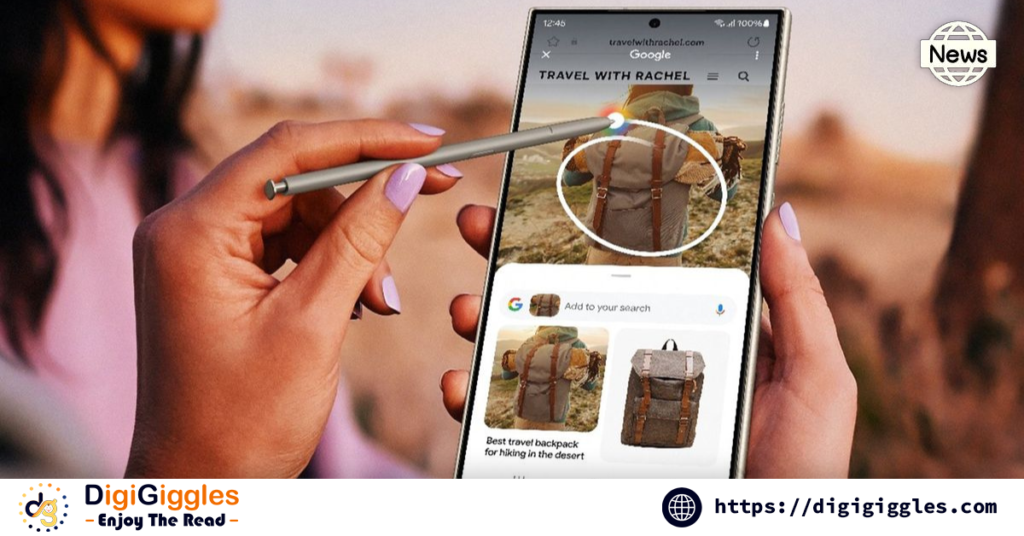
Google is reportedly preparing to bring its “Circle to Search” feature to a wider range of Android smartphones, beyond its Pixel series and select Samsung models. This news is significant for Android users who have been eager to try this unique search functionality, which has so far been limited to premium devices.
What is Circle to Search?
For those unfamiliar with the feature, Circle to Search is a tool that allows users to search for any content on their screen—whether it’s text or an image—by simply drawing a circle around it. The feature bypasses the usual routine of long-pressing or copying and pasting, making search faster and more intuitive. Whether you’re browsing social media, reading an article, or watching a video, this feature enables you to instantly search for relevant information, images, or even shopping links with just one gesture. For example, let’s say you’re scrolling through a website and come across an image or product name you’re curious about. Instead of the usual process of copying and pasting text into a search bar, you can circle the item on your screen, and Google will fetch the relevant search results instantly.
Expanding Beyond Pixel and Samsung Devices
Initially, this feature was rolled out exclusively on Google Pixel and certain Samsung smartphones, but reports suggest that Google is working to make it available on other Android phones as well. Brands like OnePlus, Xiaomi, Oppo, and Realme are likely to benefit from this update. While there is no official timeline for the rollout, sources indicate that this could happen through a future Android update. The expansion of Circle to Search is part of Google’s broader effort to enhance the Android ecosystem and make high-end features more accessible to users across all device ranges. Whether you own a flagship phone or a budget device, the idea is to deliver a premium experience, further enriching the way people interact with their smartphones.
Enhancing User Convenience and Productivity
Google’s decision to expand Circle to Search makes perfect sense, especially as the feature has proven to be a powerful tool for enhancing user productivity. Imagine being able to instantly get information about a term or product you encounter while browsing. It’s an ideal tool for students conducting research, professionals reviewing documents, or even shoppers looking to quickly check prices or reviews. By making the search process more fluid, Google is ensuring that users spend less time typing and more time getting the information they need. This feature is also expected to be a hit with users who engage heavily with multimedia content. Watching a video and curious about something mentioned? Just circle the object or phrase on your screen, and you’ll get the relevant details almost immediately. It’s easy to see how this feature could significantly streamline the mobile browsing experience, cutting down the time users spend navigating between apps.
What It Means for Android Users
For Android users, this development is a game-changer. Google is known for continuously improving its ecosystem, and the expansion of Circle to Search to non-Pixel and non-Samsung devices is another example of its commitment to user experience. By rolling out this feature to a broader range of smartphones, Google ensures that Android remains competitive in a rapidly evolving market, where features like this are becoming increasingly critical for retaining users. As of now, there’s no official word on exactly when this update will roll out, but Android users across the world are eagerly awaiting its arrival. If you own an Android phone from a brand like Xiaomi or OnePlus, the good news is that you may not have to wait too long before you get to try this exciting new feature. With its seamless, easy-to-use interface, Circle to Search could soon become a staple for many Android users, transforming how we interact with our smartphones and making search a more integrated part of everyday usage.